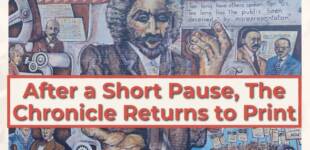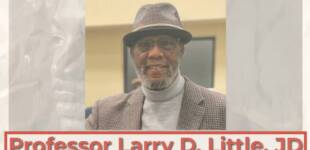Historic enslaved potter Peter Oliver of Old Salem has an enduring legacy
Peter Oliver’s dramatic story of being a local Moravian slave who learned pottery and purchased his own freedom is still remembered today, by historical experts and his descendants.
Oliver’s skill and contributions to history were noted in “Peter Oliver: Life of a Black Moravian Craftsman” by historian Jon Sensbach.
“Moravian pottery is today regarded as among the best in late eighteenth- and nineteenth-century America, a legacy in which Peter Oliver played a substantial part,” wrote Sensbach, a University of Florida history professor.
Many Forsyth County natives can trace their lineage to Oliver, including basketball star Chris Paul.
One of Oliver’s descendants is Raymond Oliver, a retired local dentist. He said a decade ago he was contacted by Mel White, a historian with Old Salem, who had traced Peter Oliver’s lineage to his modern descendants. Meetings were held, and 50 descendants attended and were given genealogical information about their connection to Peter Oliver. Reunions of descendants are still regularly held.
Raymond Oliver said he didn’t waste any time producing a play in 2005 on his noted ancestor, “The Peter Oliver Story,” which drew a full house.
“If he could accomplish all he did under the time and circumstances that he found himself, we should be encouraged to do more, since we have so many opportunities available to us now,” he said.
Peter Oliver is also remembered at Old Salem Museums & Gardens, which features the restored historic town of Salem, where he spent many years of his life. In 2010, Old Salem held a service for the 200th anniversary of his death. He’s featured during the African American Heritage Tour at Old Salem and is even featured in the tour’s video “Between Two Masters.”
Cheryl Harry, Old Salem’s director of African-American programing, said that Peter Oliver was an example of the many educated and skilled artisans who were slaves. She said he was well regarded in the church, too.
“He was a beloved member of the Moravian community,” she said.
Peter Oliver was born on May 10, 1766, in Virginia. During his early years he was simply known as “Oliver.” He came to Wachovia as an enslaved adolescent. In July 1785, the Single Brother House in Salem, where unmarried Moravian men stayed, took over his lease. He worked in the house’s kitchen, garden and craft shop. The house purchased him in 1786 and he was baptized and given the Christian name “Peter.”
Slaves at the time worshiped alongside their white brethren in the Moravian Church and were addressed as “brother” and “sister.” The Moravian Church expected slaves to be obedient and, in exchange, masters were expected to treat them humanely.
“During that time, when Peter Oliver joined the church, Moravians believed that everybody was equal spiritually, so once you joined the church you were a full- fledged member of the congregation,” Harry said.
Slaves like Oliver would learn to write and read both English and German. Slaves would use the church’s rules to have more say in how they were bought and sold, allowing Oliver to negotiate how he was sold and to whom.
In 1788, he moved to Bethabara when he was purchased by Moravian master potter Rudolph Christ, who taught him the trade.
When Christ moved back to Salem, Oliver remained in Bethabara with a new master, potter Gottlob Krause. He worked there until 1796, when he returned to Salem to work for Christ again.
Moravian records showed his pottery skills made his value as a slave increase.
He purchased his own freedom by 1800. In 1802, he married a free mulatto woman working in Salem named Christina Bass, and they had six children.
He rented a four- acre plot of land just north of town.
Because of the fear of a slave revolt, stipulations were put on him that no one other than his family could live in the house, and that he report any conspiracy involving blacks against citizens or the county.
Oliver continued to be a potter, supporting his family through the sale of pottery and farming.
He died of illness on Sept. 28, 1810.
He was buried in God’s Acre with a men’s choir. He was the last African-American buried there.
Over the next decade, the Moravian church started to have blacks worship separately, leading to the creation of St Phillips Moravian Church in 1822, which had its own graveyard for African-Americans.
While Moravian pottery from the era has survived, which specific pieces Peter Oliver did has never been determined.










